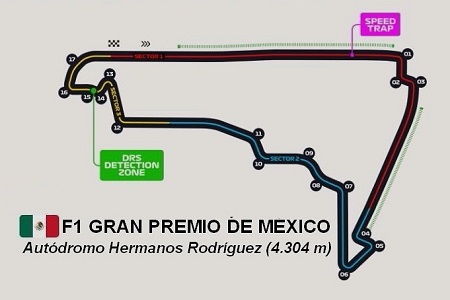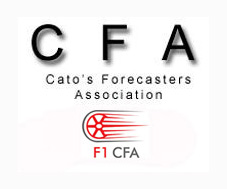AUTODROMO HERMANOS RODRIGUEZ

 México (Autódromo Hermanos Rodríguez / Ciudad de México): Inaugurado en 1962, ubicado en la Ciudad Deportiva Magdalena Mixhuca, en el interior de la Ciudad de México, D.F., conserva en gran medida su trazado original, si bien ha sido reformado recientemente siguiendo los consejos de Hermann Tilke.
México (Autódromo Hermanos Rodríguez / Ciudad de México): Inaugurado en 1962, ubicado en la Ciudad Deportiva Magdalena Mixhuca, en el interior de la Ciudad de México, D.F., conserva en gran medida su trazado original, si bien ha sido reformado recientemente siguiendo los consejos de Hermann Tilke.De su trazado original, a las sucesivas modificaciones de la "Espiral" (actualmente "Eses Moisés Solana"), o el acortamiento de la zona de la "Horquilla", se une la fuerte transformación realizada a partir de la curva 11 hasta la zona antes conocida como "La Peraltada" con la inclusión de cinco nuevas curvas que ralentizan mucho la velocidad que antiguamente se registraba en aquella zona.
Con respecto al trazado original, la curva 1 del ha sido ligeramente modificada; la frenada en la curva 4 ha sido acentuada y será sin duda un punto claro de adelantamiento; la curva 6 consta de un doble vértice que conduce a una corta recta que, tras la curva 7, lleva hasta una zona serpenteada rápida, acceso previo a otra de las zonas más rápidas de la pista (la comprendida entre las curvas 11 y 12), previa al tercer sector que, con cinco nuevas curvas, constituye la parte más lenta y selectiva del trazado, finaliza con la última curva (trazado parcial de la antigua "Peraltada") que desemboca en la larga recta de poco más de 1.300 metros, donde se considera que los monoplazas puedan alcanzar velocidades máximas de casi 330 km/h.
Por último conviene recordar que la elevada altitud de la Ciudad de México, 2.286 metros, impone características específicas en el sistema de carburación de los motores.
Apoyo aerodinámico: 9 / 10 - Desgaste de frenos: 6 / 10 y Desgaste de neumáticos: 5 / 10.
 Mexico (Autódromo Hermanos Rodríguez / Mexico City): Inaugurated in 1962, located in the Magdalena Mixhuca Sports City, in the interior of Mexico City, D.F., it largely preserves its original layout, although it has been recently reformed following the tips from Hermann Tilke.
Mexico (Autódromo Hermanos Rodríguez / Mexico City): Inaugurated in 1962, located in the Magdalena Mixhuca Sports City, in the interior of Mexico City, D.F., it largely preserves its original layout, although it has been recently reformed following the tips from Hermann Tilke.From its original layout, to the successive modifications of the "Espiral" (currently "Eses Moisés Solana"), or the shortening of the "Horquilla" area, the strong transformation carried out from turn 11 to the area formerly known as "La Peraltada" with the inclusion of five new curves that greatly slow down the speed that was previously recorded in that area.
With respect to the original layout, turn 1 of the has been slightly modified; the braking in turn 4 has been accentuated and will undoubtedly be a clear point of overtaking; turn 6 consists of a double apex that leads to a short straight that, after turn 7, leads to a fast winding area, prior access to another of the fastest areas of the track (the one between turns 11 and 12) , prior to the third sector which, with five new curves, constitutes the slowest and most selective part of the route, ends with the last curve (partial route of the old "Peraltada") that ends in the long straight of just over 1,300 meters, where it is considered that the single-seaters can reach maximum speeds of almost 330 km/h.
Lastly, it should be remembered that the high altitude of Mexico City, 2,286 meters, imposes specific characteristics on the engines' carburetion system.
Downforce: 9 / 10 - Brake wear: 6 / 10 and Tire wear: 5 / 10.

